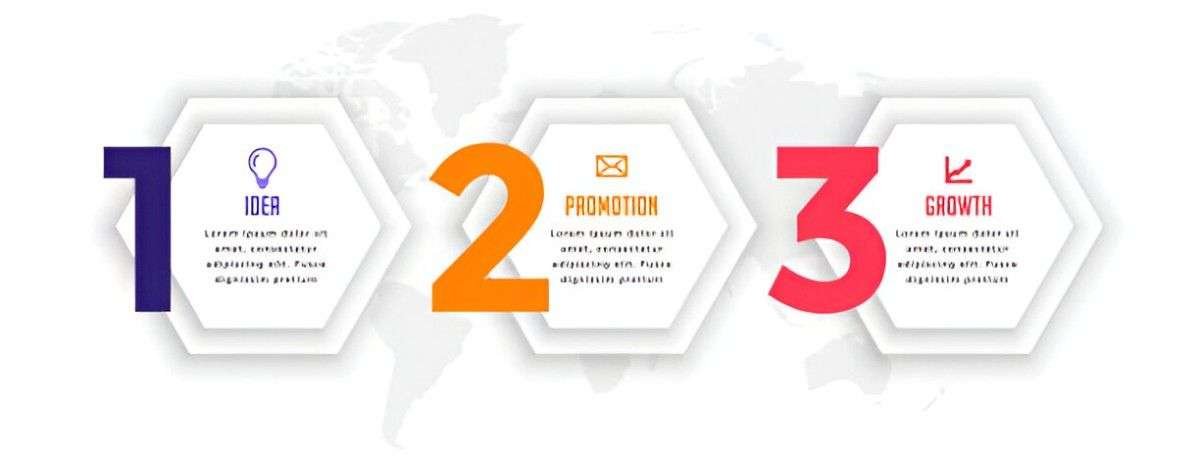Starting a business is often seen as an exciting, challenging journey, but it’s not without its hurdles. As an entrepreneur, I’ve realized that this journey unfolds in distinct phases, each with its own set of challenges, decisions, and rewards. Understanding these phases can help us prepare for what’s ahead, enabling us to take more calculated risks and make informed decisions that pave the way for growth. Whether you’re a first-time entrepreneur or someone who’s been in the game for a while, it’s crucial to recognize the stages your business will go through and how to approach each one effectively.
In this article, I’ll break down the three key phases of entrepreneurship, providing a comprehensive look at what each phase entails, how they differ from one another, and how to successfully navigate them. These phases are the ideation phase, the growth phase, and the maturity phase.
Table of Contents
Phase 1: The Ideation Phase
The ideation phase is the first and often the most exhilarating part of entrepreneurship. It’s when I came up with an idea, identified a problem, and envisioned a solution that I believed could add value. The ideation phase typically begins with a concept or an opportunity that sparks excitement. At this point, there are many uncertainties, and the idea is still raw. It may not have been fully tested or validated, and it could still undergo many changes.
Key Elements of the Ideation Phase:
- Market Research: I started by researching the market to ensure that the idea addresses a real need. This is often the first major hurdle. I had to confirm whether the problem existed, what current solutions were in place, and how my offering could do things differently or better.
- Building a Business Model: At this stage, it’s essential to sketch out a basic business model. I had to decide how my business would generate revenue, who my target audience was, and how I would differentiate my offering from others. Will it be a subscription model, a one-time purchase, or something else?
- Prototype or MVP (Minimum Viable Product): Before fully diving in, I created a prototype or an MVP to test the waters. The goal is to make a simplified version of the product that will help me gather feedback. A basic version of the product can go a long way in identifying potential issues and improving the final product.
Challenges in the Ideation Phase:
- Validation: It’s difficult to know if the idea will succeed. Many entrepreneurs (myself included) find it hard to assess whether their concept has real potential. Validation typically happens through customer feedback and market tests, but it’s an ongoing process.
- Resource Constraints: The ideation phase often involves minimal capital, so resources like money, time, and energy are limited. It may feel like you’re constantly fighting against the clock to build a viable product with limited resources.
Example: Suppose I’m thinking about launching a food delivery service. The initial idea is to create an app that connects local restaurants with customers. To validate this idea, I conduct surveys and interviews with potential customers, and I discover that many people are frustrated with delivery times and high delivery charges in their area. Armed with this knowledge, I move on to building a prototype of the app, complete with a basic payment system and restaurant listings.
Phase 2: The Growth Phase
Once the ideation phase is complete, it’s time to move into the growth phase. This phase is characterized by scaling the business, expanding the customer base, and solidifying the operational aspects of the company. This phase is where the business begins to evolve from an idea into a sustainable, income-generating operation.
Key Elements of the Growth Phase:
- Marketing and Customer Acquisition: At this stage, I needed to focus on marketing strategies that would generate leads and convert them into customers. I focused on building a brand identity and telling a compelling story to connect with my target audience.
- Scaling Operations: As business picks up, I found that it was necessary to scale my operations. That could mean hiring employees, investing in technology, and optimizing the supply chain. The systems I created in the ideation phase often needed to be reworked to accommodate the growing demand.
- Refining the Product or Service: The growth phase isn’t just about attracting customers. It’s also about delivering a better experience. The feedback gathered during the ideation phase should be used to improve the product. The more customers I acquire, the more data I have to refine my product.
Challenges in the Growth Phase:
- Cash Flow Management: One of the most critical aspects of growing a business is maintaining positive cash flow. While revenue increases, so do expenses. If my costs grow faster than revenue, it can lead to financial strain, which I had to be prepared for.
- Hiring and Team Building: As the business expands, hiring becomes more complex. I had to make sure that I hired the right people who shared my vision and were equipped to handle the demands of a growing business.
- Maintaining Quality: Growth comes with the risk of losing quality. It’s essential to maintain a consistent level of service or product quality as the business scales. A drop in quality could result in losing customers, so I worked hard to maintain high standards while scaling operations.
Example: Going back to the food delivery service example, once I validated my app with a small group of users, I decided to expand the offering to a larger area. I invested in digital marketing campaigns, reaching out to local restaurants and negotiating exclusive deals for app users. My team grew as I hired drivers, customer service representatives, and tech specialists to support the expansion.
Phase 3: The Maturity Phase
After experiencing significant growth, the next phase is the maturity phase. In this phase, the business has established itself in the market, and its operations are stable. Growth starts to plateau, and the challenge becomes maintaining market share and profitability while navigating competition.
Key Elements of the Maturity Phase:
- Innovation and Diversification: In the maturity phase, the product or service has been refined and stabilized. At this point, I focus on diversifying my offerings to keep the business relevant. This could mean introducing new features, launching complementary products, or even expanding into new markets.
- Efficiency and Cost Reduction: At this stage, I’m constantly looking for ways to reduce costs and improve operational efficiency. Automation, outsourcing, and streamlining processes become essential. This is when a business becomes more sophisticated in its operations.
- Sustaining Profitability: I must remain focused on profitability. With competition in the market, it’s easy to fall into the trap of cutting prices to retain customers. Instead, the goal should be to sustain profitability without sacrificing value.
Challenges in the Maturity Phase:
- Complacency: As the business becomes established, there’s a tendency to become complacent. At this point, I may think I’ve made it, but it’s important to keep innovating and adapting. The market is always changing, and I need to stay ahead of the curve.
- Competition: As the business matures, it often attracts competitors. Larger companies may start offering similar services at lower prices, or new startups may enter the market with fresh ideas. It’s crucial to stay agile and find ways to differentiate my brand.
Example: Back to the food delivery service, by the time I reach the maturity phase, the app has established itself as a leader in my local area. However, I notice that other companies have entered the market, some with better pricing or more features. To maintain my edge, I introduce a loyalty program for customers, adding subscription options and premium service tiers.
Conclusion
Entrepreneurship is a journey of constant evolution. From the initial spark of an idea to the sustained growth of a business, the path involves many twists and turns. Recognizing the three phases of entrepreneurship—ideation, growth, and maturity—can help entrepreneurs navigate the complexities of building a business. Each phase comes with its own challenges and opportunities, but with a clear vision and a solid strategy, success is within reach. As I’ve learned from my experiences, entrepreneurship is about adapting, staying resilient, and continuously moving forward.
In the end, while each phase has its unique set of challenges, the ultimate goal is to build a sustainable business that continues to add value to its customers, creates jobs, and remains relevant in a constantly changing marketplace.





